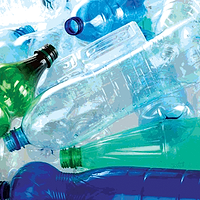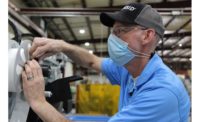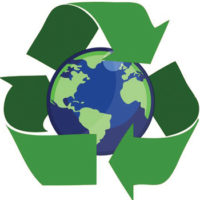Attaining Clearances for Food-Packaging Materials

In today’s global marketplace, an understanding of foreign laws and regulations, as well as international standards, is necessary. Through Keller and Heckman’s “Ask an Attorney” feature on www.packaginglaw.com, we have received a number of questions about how regulations governing food-contact materials in one country compare with those in another country. While similar scientific principles form the bases of food-packaging regulations throughout the world, the approaches used and specific data requirements can differ significantly from jurisdiction to jurisdiction.
Systems for regulating food-contact materials can include one or a combination of the following: general safety requirements, mandatory positive lists, voluntary positive lists, preclearance requirements, no-objection letters and licensing and/or registration requirements. General safety requirements are intended to preserve the physical, chemical and sanitary integrity of the contents of food packages. Overall, these requirements prohibit the transfer of substances that may be deleterious to human health or bring about an unacceptable change in composition, taste or odor of food. Countries that regulate packaging materials for food primarily through general safety requirements include Mexico, South Africa, some South American countries and some Asian countries.
Jurisdictions that have mandatory “positive lists” of substances permitted for use in food-contact articles include the European Union (EU) and Mercosur (Mercado Común del Sur). These lists may apply to specific categories of food-contact materials, such as plastics or paper products. Use of substances not on mandatory “positive lists” is generally prohibited. Exceptions would include when there is a transitional period before a “positive list” becomes mandatory or substances on a provisional list.
There are also voluntary standards that include “positive lists.” For example, the German Federal Institute for Risk Assessment, or Bundesinstitut für Risikobewertung, has issued recommendations for food-contact paper and paperboard and other food-contact materials not covered within the scope of mandatory EU positive lists (see below). While not legally binding, these recommendations are widely respected by industry.
Another example is voluntary standards for food-contact articles made of polyolefins and certain polymers issued by the Japan Hygienic Olefin and Styrene Plastics Association (JHOSPA). JHOSPA’s voluntary standards include “positive lists” of polymers, additives and colorants.
Data requirements—such as toxicological safety assessments and migration levels—to support petitions to clear new food-contact materials also vary between jurisdictions. Many of the differences in global regulatory systems governing food packaging are in the details. To illustrate some of these details, the remainder of this article will contrast and compare laws and regulations governing food-contact plastics in the U.S., EU, China and Mercosur.
U.S.: Clearance for Final Polymers
In the U.S., the Federal Food, Drug and Cosmetic Act (FDCA or the Act), 21 U.S.C. Section 301, et seq., provides that any substance that is intended to become a component of food (e.g., migrates from packaging into food) must be: generally recognized as safe, used in accordance with a sanction or approval issued prior to 1958 by either the U.S. Food and Drug Administration (FDA) or the U.S. Department of Agriculture, the subject of a “Threshold of Regulation” exemption letter or cleared by a Food Contact Notification or a food additive regulation.
Polymers cleared for food-contact use by FDA are listed in Title 21 of the Code of Federal Regulations (C.F.R.), Part 177, “Indirect Food Additives: Polymers.” Part 177 is further divided by types of polymers. For example, Section 177.1520 lists cleared polyolefin polymers and Section 177.1630 lists cleared polyethylene phthalate polymers.
For plastic packaging materials, FDA regulations clear the final polymer, not unreacted starting materials. There are, however, some instances in which FDA does not clear the polymer per se, but rather permits any of a number of starting reactants to be used to make a finished polymer. For example, in the case of adhesives, Part 175.105 lists substances cleared by FDA that may be used in adhesive formulations intended for food contact.
Another exception is found in Part 175.300, “Resinous and polymeric coatings.” Since these substances are typically complex and often cross-linked compounds, FDA lists cleared precursor materials in this regulation. In either case, however, substances required to produce a functional polymer, such as catalysts, chain regulators, chain transfer agents and similar materials used at low levels (generally 1% or below), are typically considered part of the basic resin and do not require independent regulatory consideration by FDA.
Food additive clearances may have quantitative limitations and end-test requirements. More specifically, they may limit the types of food that will be contacted, the maximum temperature at which a material may be used or the type of application (repeated-use versus single-use).
Any food-packaging material intended to come in contact with food must comply with FDA’s Good Manufacturing Practices (GMP) regulation, found in Title 21 C.F.R., Part 174.5. GMP requirements apply to both the use level of an additive as well as to its suitable purity. This means that additives may only be used in an amount necessary to achieve their function or purpose, and must also not contain impurities at levels so high as to result in the adulteration of food.
In passing the FDCA, the U.S. Congress decided to exclude “housewares” from the need for FDA premarket clearance requirements for food additives. Housewares are finished articles sold without prepackaged food and used by consumers in the home to hold, prepare or serve food. Importantly, housewares are not exempt from the general safety requirements of the Act and, therefore, must be suitable for use with food so as not to result in its adulteration.
Since the Food Contact Notification (FCN) program was implemented in 2000, it has become the preferred method to obtain FDA clearance for new food-contact substances. Under the FCN program, a manufacturer or supplier of a food-contact material may submit an FCN that includes the identity and intended use of the new food-contact substance, along with information supporting the conclusion that the substance is safe for its intended use.
In contrast to the traditional food additive petition process, which requires a lengthy rulemaking process, FDA has only 120 days from the filing of an FCN to complete its review of the notification. Another difference from the old petitioning process is that FCNs are proprietary, that is, only the notifier/manufacturer and its customers can rely on them.
EU: Positive List of Monomers and Additives
Plastics Regulation (EU) No. 10/2011 governs the use of plastic materials and articles intended to contact food in the EU. It includes a positive list of permissible monomers and other starting substances, and additives (other than colorants). It also includes some polymer production aids (PPAs); however, PPAs not on the positive list can be used in food-contact plastics, subject to the national laws of individual Member States.
The Plastics Regulation also establishes an overall migration limit (OML) of 10 mg/dm2 for all plastics in contact with food, unless the use is subject to an exemption. Specific migration limits (SMLs) and residual quantity in the material (QM) limits for certain substances also are specified. For substances not subject to an SML (or similar limitation), a generic default SML of 60 mg/kg is applied. The Plastics Regulation introduced a separate testing scheme to verify compliance with OMLs and set new time and temperature parameters for SML compliance testing. These changes are being phased in.
Unlike U.S. regulations, the EU Plastics Regulation does not include limits on coreactants or use levels for starting materials, temperature restrictions, specification of single versus repeated use and food types for specific substances.
Printing inks, adhesives and coatings are not covered by the Plastics Regulation and, therefore, are subject to Member State national laws. However, since the Plastics Regulation includes within its scope printed plastic articles, components used in printing inks that are on the Plastics Regulation’s positive list and have SMLs or other restrictions must comply with those limitations when used on plastic articles.
Anyone can petition to add a new monomer or additive to the Plastics Regulation’s positive list. These petitions are first reviewed by the European Food Safety Authority (EFSA), which will issue a formal opinion on the safety of the substance when intended for use with food and any limitations that should be observed.
Once EFSA has issued an opinion, finding a proposed use of a substance to be safe, the European Commission (EC), provided it concurs with the opinion, will add the substance to the list through an amendment to the regulation.
Finally, all food-contact materials in the EU must comply with the safety criteria requirements set forth in Framework Regulation (EC) No. 1935/2004, which covers basic requirements (e.g., GMPs and the like) applicable to the use of all food-contact materials in the EU.
China: Approval Required for All Food-Packaging Materials
China’s Food Safety Law requires approval of all “food-related products,” including food-packaging materials. Additionally, it prohibits the importation, use or purchase of food-related products that do not comply with applicable Chinese standards. China is in the process of “harmonizing” the GB (Guobiao, or “National”) Standards that were in place prior to the effective date of the current law (June 1, 2009) with its Food Safety Law and converting them to Food Safety Standards. Until this process is complete, all packaging materials must comply with all existing GB Standards.
One of China’s GB Standards, “Hygienic Standards for Uses of Additives in Food Containers and Packaging Materials” (GB 9685), includes a positive list of additives permitted for use in food-packaging materials and covers polymers, coatings and adhesives. Initially, the list consisted of 959 additives despite the fact that there were numerous other food-contact substances in use in China at the time. Accordingly, Chinese authorities established procedures for clearing the use of additives and resins that were being marketed in China at that time, but were not on the GB 9685-positive list. This resulted in the submission of some 3,000 petitions under those procedures, which were referred to as “cleanup” submissions or “grandfather” petitions.
In response to these petitions, China has cleared an additional 107 resins and 301 additives for food-contact use, although additional specifications for the resins and/or corresponding finished article standards are still being considered by the Chinese Ministry of Health (MOH). The MOH also is in the process of reviewing the remaining cleanup petitions. The final list of approvals, in addition to a negative list of substances prohibited from use in food packaging, is expected to be published by the end of 2012. Recently, China announced plans to revise GB 9685 by June 2013, but that deadline may be optimistic.
Procedures for clearing new resins and additives for use in food-packaging materials are included in China’s Management Rules for the Administrative Approval of New Varieties of Food Related Products (the rules), which were issued on June 1, 2011. Article 3 of the rules sets out the requirements for petitions intended to clear new food-related products, including packaging materials. Specifically, petitions should demonstrate that a substance: has a clear scope of use; is technically necessary; will not negatively impact human health under ordinary/reasonable uses or alter the ingredients, structure, color or flavor of the food; and will be used at the lowest level needed to achieve the desired technical effect. In addition, an accompanying guidance document (guidance) details data requirements not specified in the rules.
In this regard, toxicology data requirements are set out based on projected levels of migration. Additionally, toxicological testing must be conducted in accordance with Good Laboratory Practices. Although testing does not have to be conducted in China, if it is done there, the lab must be government-accredited.
Mercosur: Recently Revised Positive Lists of Monomers and Polymers
Mercosur, also referred to as the “Common Market of the South,” is the largest trading bloc in South America. Current members include Argentina, Brazil, Paraguay, Uruguay and Venezuela. (As of July 31, 2012, Paraguay was suspended but remains a full member.) Mercosur established general safety criteria applicable to all food-contact materials in 1992 under GMC Resolution No. 3/92. Specifically, this resolution requires that all food-contact materials: 1) be manufactured in accordance with GMPs; 2) be of suitable purity; 3) not transfer any harmful or toxic compounds from the packaging to the food and 4) not cause any unacceptable changes in food composition, taste or odor. Mercosur’s general standards for food-contact materials apply to housewares and food-processing equipment other than drinking water equipment.
Mercosur also has issued GMC resolutions applicable to some specific categories of food-contact materials, including plastics, elastomers and adhesives. GMC Resolution No. 02/12, “Mercosur Technical Regulation on Positive List of Monomers, Other Starting Substances and Polymers Authorized for the Manufacture of Plastic Packaging and Equipment that Come into Contact with Food,” was recently adopted and must be incorporated into the national legislation of member countries by November 1, 2012.
The resolution has five parts: 1) a list of monomers and other starting substances with usage restrictions, composition limits and SMLs; 2) a list of products obtained by bacterial fermentation; 3) general specifications; 4) notes related to “restrictions and/or specifications” and 5) a list of polymers obtained from monomers listed in Part 1 and/or polymers included in Part 2 and/or other polymers.
The positive lists for additives (found in GMC Res. 32/07) cover substances added to plastic to obtain a desired effect (e.g., antioxidants, foaming agents, lubricants and plasticizers) and substances used to produce an appropriate polymerization medium (e.g., wetting agents, surfactants and solvents). Separate resolutions address test methods, including one for determining overall migration values (GMC Res. 32/10). Reusable plastics are generally banned, with certain exceptions.
The general requirements to add a new substance to a positive list are found in GMC Res. 31/99. Petitions must be submitted to either the Argentina National Food Commission (CONAL) or the Brazil National Agency of Sanitary Surveillance (ANVISA). Once either CONAL or ANVISA deem a petition acceptable, it is forwarded to Mercosur. Generally, if a substance is cleared in the EU or U.S., the submitter can expect it to be adopted by Mercosur with similar limitations (e.g., SMLs, QMs and types of food).
Conclusions
To determine whether a food package can be legally marketed in jurisdictions around the globe, one has to consider numerous factors, beginning with the composition of the package, the food or beverage intended to be packaged and the conditions to which the package will be subjected during manufacturing and use.
However, it is not a one-size-fits-all kind of world, as there are many subtle differences from region to region in the data requirements and in the manner in which these products are regulated.
 George G. Misko is a partner in the Washington, D.C., office of Keller and Heckman LLP. His practice focuses on food and drug matters and environmental concerns, including pesticide regulation and chemical control regulations. He has extensive experience counseling clients on regulatory requirements relating to chemical substances, plastics and food products in the U.S. and other jurisdictions, including Canada, the EU, Latin America and the Pacific Rim. He also represents trade associations, including acting as general counsel to the Silicones Environmental, Health and Safety Council. Misko also has experience in civil trial and appellate matters. He can be reached at misko@khlaw.com.
George G. Misko is a partner in the Washington, D.C., office of Keller and Heckman LLP. His practice focuses on food and drug matters and environmental concerns, including pesticide regulation and chemical control regulations. He has extensive experience counseling clients on regulatory requirements relating to chemical substances, plastics and food products in the U.S. and other jurisdictions, including Canada, the EU, Latin America and the Pacific Rim. He also represents trade associations, including acting as general counsel to the Silicones Environmental, Health and Safety Council. Misko also has experience in civil trial and appellate matters. He can be reached at misko@khlaw.com.
Looking for a reprint of this article?
From high-res PDFs to custom plaques, order your copy today!








